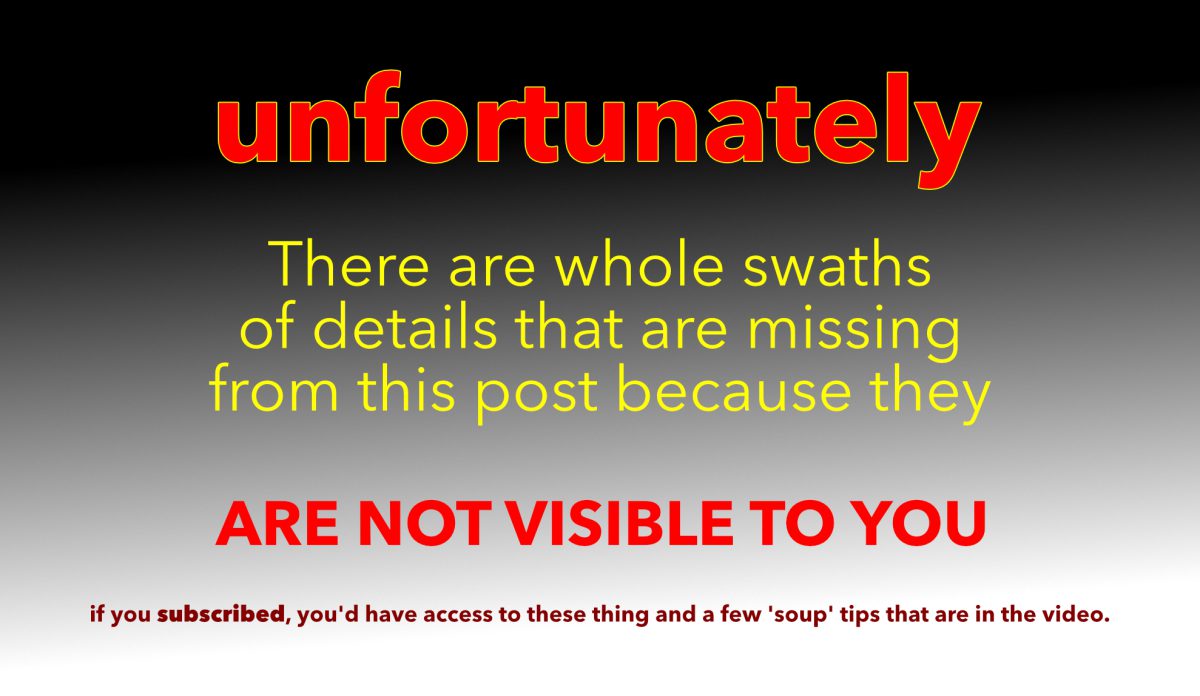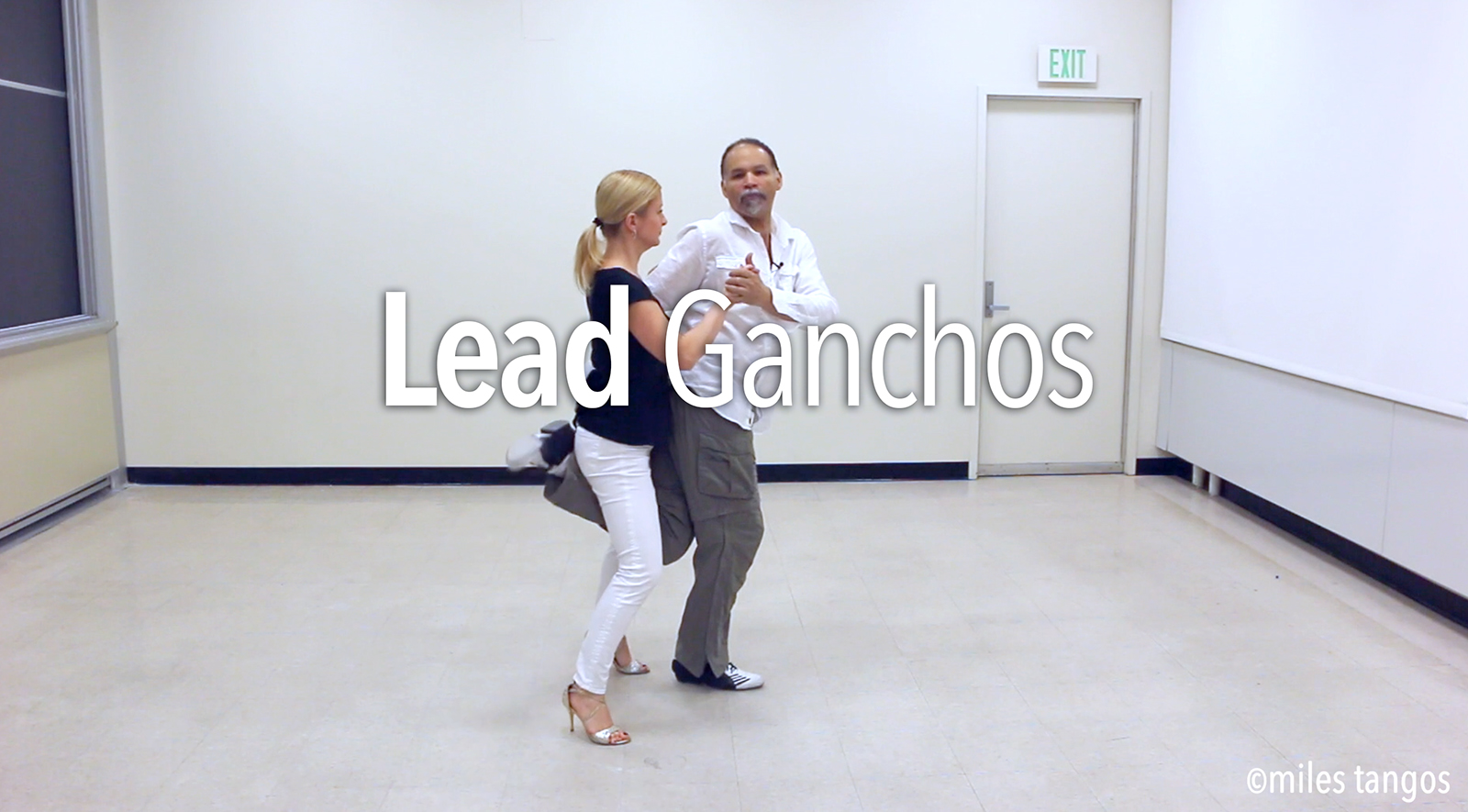Lead Ganchos. 9 times out of 10 when you think of a Gancho, assuming you think of one at all, unless you’re a Lead in your Gancho phase, your thought immediately goes to the visual of the Follower doing some crazy sh*t with their leg to the Lead in this seemingly (more often than not) crazy, twisted bodily position – Un Gancho! Truthfully the Gancho can be an ungainly sight, it can also hurt if done improperly, it can also leave a mark on clothing if done inappropriately. At the same time the Gancho can be, assuming it’s done properly, a very nice accent or way to spice up a dance with one or two (no more than that, please) Ganchos for either role. Either role ? Yes, both roles have access to the Gancho idea. It’s just that, as was stated before, most people think of the Follower being led to Gancho their Lead. However, there are a whole swath of Ganchos where the Lead Ganchos the Follower! This is known as a Lead Gancho and is Today’s Tango Topic, so without further yapping, let’s dive into Lead Ganchos!
What is a Gancho ? In it’s simplest form, in the modern vernacular of Tango, it is a hooking of the free leg around your partner’s leg or thigh. It is an interruption of the extension phase of the step, which can (not always) result in the lifting of the respondent’s leg either as a result of, or by deliberate intention. The typical thinking of a Gancho is that this is something that ONLY the Follower does to the Lead. That’s not the case. A Gancho can be performed for either role!
What is a Lead Gancho ? Put simply it’s where the Lead, lifts/and then wraps their free leg around the Follower, on the Follower’s Forward, Side, or Back Steps. More lift then wrap, as a ‘wrap’ is something entirely different. However the lift is quite accurate. As the Lead is factually lifting their leg, knee, and foot to ‘Gancho’ the Follower instead of the other way around. More than likely you’ll end up seeing these done on the Follower’s Side Step first and foremost as they are the easiest of the bunch, and less frequently on the Follower’s Forward step next to their lead, and very, very infrequently on the Follower’s Back Step next to their lead.
The Red Warning Label: Before another word is written and understood by you the reader, let’s get something clear right from the start. A Lead Gancho should not be attempted by a beginner Lead with ‘5 Minutes’ of dancing under their belt. No. This is complex vocabulary that can hurt or injure you and your partners, and not to mention the people dancing around you! And by ‘5 Minutes’, this page means that you should have been dancing a long while. A very long while. And most certainly more than 5 Minutes. Here’s a few benchmarks: Until you have mastered your walk, where you are not THUDding when you walk, pushing, pulling, or compressing the frak out of your partners on a regular basis, when you have mastered the line of dance in the incremental, when you have clearly mastered close embrace dancing constructs and it has become a near ‘fluid’ embrace construct when you want to change things up a bit, that is when you can start to play with a Lead Gancho, and not before. You may not like to hear that but thems is the facts. This isn’t about how quickly you’ve progressed, or the number of classes you’ve taken, or who you’ve studied with! None of that stuff matters. What matters is how you have integrated a stable, secure, safe dancing model into your typical dance! That’s what more than ‘5 Minutes’ means
The Free Tip. There is one Gancho on the Open Side of the Embrace that is going to kill you. Absolutely kill you. It’s the Parallel System Lead Gancho on the Follower’s Forward Step. Talk about an ouch! If you can manage the rotation in this one AND keep the embrace at the same time, you’re doing pretty good! However chances are you’re going to have to break the embrace. So while this video talks about 6, we only show 5! Ok I show the 6th but it’s kinda convoluted. 😉

About The Video. This video is 8m:31s in length in 6 Sections and of HD quality.
Warning: It is strongly recommended before attempting to do this that you watch the series on the Gancho foundation.
1.) Introduction – 00:57
2.) Parallel System Gancho – 03:18
3.) Cross System Gancho – 00:38
4.) Follower Cues – 00:24
5.) Lead Ganchos on Forward Steps – 02:00
6.) Review & End – 00:46

